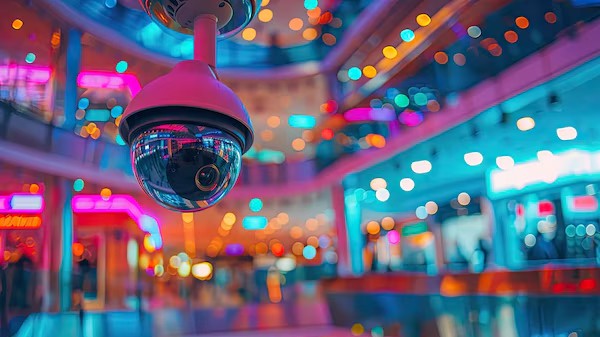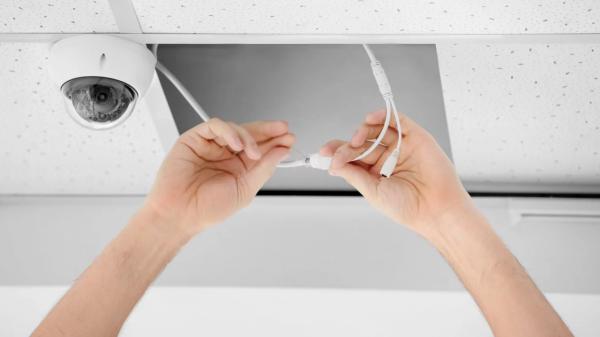

Building Security: How Surveillance Cameras Protect Construction Sites
In the ever-evolving landscape of the construction industry, safeguarding valuable assets and maintaining site safety are critical priorities. Jobsite security cameras have emerged as indispensable tools in the fight against theft, vandalism, and unauthorized access. These sophisticated surveillance systems provide real-time monitoring capabilities, equipping construction managers with a robust means to deter criminal activities and foster a secure working environment.
This article delves into the myriad advantages of installing security cameras at construction sites. We will explore the different types of security cameras available, including solar-powered options and mobile surveillance units. Furthermore, we will highlight essential features to consider when choosing construction security cameras, such as motion detection and remote access capabilities. By effectively utilizing these surveillance tools, construction professionals can bolster asset protection, enhance intrusion detection, and cultivate a safer, more efficient jobsite.
Jobsite security cameras offer numerous benefits for construction firms, playing a crucial role in asset protection, site safety, and liability reduction. By deploying advanced surveillance systems, construction managers can address the pressing concerns that pervade the industry today.
A primary benefit of jobsite security cameras is their effectiveness in deterring theft. Construction sites often attract thieves due to the high value of tools, materials, and equipment present. By strategically placing cameras and ensuring continuous monitoring, the likelihood of theft can be significantly diminished. In instances of theft, recorded footage serves as critical evidence, aiding in the recovery of stolen items and the identification of culprits.
Jobsite security cameras enable construction managers to monitor sites in real time, even when they are not physically present. This capability is particularly advantageous for extensive projects that span multiple acres. Advanced features such as motion detection and alerts allow managers to swiftly respond to suspicious behavior or potential safety risks, thereby ensuring a secure and productive working environment.
Given the inherent risks associated with construction sites, accidents can lead to costly legal challenges and liability claims. Jobsite security cameras provide visual documentation of incidents, which can be invaluable in mitigating these risks. In the event of a worker’s compensation claim or dispute, security footage can help clarify circumstances, protecting construction companies against unfounded allegations. Moreover, the presence of surveillance cameras can promote compliance with safety regulations, further reducing the chances of accidents and related liabilities.
Construction sites utilize various types of security cameras to effectively monitor and safeguard their premises. The choice of camera depends on factors such as site layout, security needs, and budget constraints. Here are some common categories of construction site security cameras:
Fixed cameras, also referred to as static cameras, are installed in a permanent position to monitor specific areas of the construction site. These cameras are ideal for overseeing entry and exit points, perimeters, and key areas housing valuable assets. Fixed cameras offer continuous surveillance and can be easily integrated with other security systems, such as access control and intrusion detection.
Key Features of Fixed Cameras:
High-resolution imaging for clear, detailed footage
Wide-angle lenses for expansive coverage
Infrared (IR) capabilities for low-light environments
Weatherproof and vandal-resistant housing for durability
PTZ cameras provide enhanced flexibility and coverage compared to fixed models. These cameras can be remotely controlled to pan horizontally, tilt vertically, and zoom in or out to focus on particular areas of interest. PTZ cameras are especially beneficial for large construction sites with multiple levels or intricate layouts.
Advantages of PTZ Cameras:
360-degree coverage with adjustable viewing angles
Capability to track and zoom in on suspicious activities
Remote control for real-time monitoring
Programmable presets for quick access to critical areas
Mobile surveillance units offer a versatile and easily deployable security solution for construction sites. These self-contained units can be moved effortlessly as the construction progresses, adapting to the changing needs of the site. Many mobile units feature solar power, wireless connectivity, and advanced camera systems for optimal performance.
Benefits of Mobile Surveillance Units:
Quick deployment and relocation as required
Autonomous power supply for remote areas
Wireless transmission of video footage for convenient monitoring
Customizable configurations to meet specific site demands
By leveraging a combination of fixed cameras, PTZ cameras, and mobile surveillance units, construction firms can establish a comprehensive and adaptable security system to effectively protect their job sites.
When selecting security cameras for construction sites, it is vital to consider key features that enhance their effectiveness. High-definition video quality is critical for capturing clear and detailed footage, with resolutions of 720p, 1080p, or even 4K enabling easy identification of individuals and objects.
Night vision capabilities are equally important, as construction sites often require 24/7 surveillance. Infrared (IR) technology allows cameras to capture clear images in low-light conditions, ensuring continuous monitoring.
Remote access is another crucial feature. The ability to view live video feeds from anywhere empowers construction managers to oversee the site at all times. This feature is particularly advantageous for large-scale projects or when managers are unable to be physically present.
Motion detection and alert systems are essential for proactive security measures. Cameras equipped with advanced motion sensors can identify suspicious activities and send immediate alerts to designated personnel, allowing for quick responses to potential threats.
Weatherproof and vandal-resistant designs are also vital for jobsite cameras. Given the exposure to harsh weather conditions and the risk of vandalism, cameras must be built to endure these challenges. Look for models with appropriate IP ratings indicating their resistance to dust, water, and impact.
Finally, wireless connectivity is a desirable feature, particularly for remote or expansive construction sites. Wireless cameras eliminate the need for complex wiring, allowing for flexible placement and making them ideal for mobile surveillance units.
When assessing jobsite security cameras, prioritize features such as high-definition video quality, night vision, remote access, motion detection, weatherproof design, and wireless connectivity. These features collectively enhance the capability of surveillance systems in safeguarding construction sites from theft, vandalism, and unauthorized access.
To maximize the efficacy of jobsite security cameras, it is important to adhere to best practices during implementation. Strategic placement of cameras is essential for comprehensive coverage of critical areas. Cameras should be positioned at entry and exit points, high-traffic zones, and locations where valuable assets are stored. Consider factors such as the camera's field of view, potential obstructions, and lighting conditions when determining placement.
Integrating security cameras with other security measures, such as access control systems and intrusion detection, significantly enhances overall site security. This integration facilitates a coordinated response to potential threats and provides a holistic view of site activities.
Regular maintenance is crucial to ensure the optimal performance of security cameras. This includes cleaning camera lenses, checking power supplies, and updating software and firmware as necessary. Establishing a maintenance schedule and designating responsibilities can help keep the camera system in peak condition.
Articles
All articles
AI Surveillance Systems: Transforming Safety and Operational Efficiency in Modern Shopping Malls
AI Surveillance Systems: Transforming Safety and Operational Efficiency in Modern Shopping Malls

The Advantages of a Comprehensive Home Surveillance System
The Advantages of a Comprehensive Home Surveillance System

Seeing Clearly: The Advantages of 4K Surveillance for Businesses
Seeing Clearly: The Advantages of 4K Surveillance for Businesses

Indoor vs. Outdoor Security Cameras: Making the Right Choice for Your Safety
Indoor vs. Outdoor Security Cameras: Making the Right Choice for Your Safety

The Smart Investment: How Monitored Security Cameras Enhance Business Safety
The Smart Investment: How Monitored Security Cameras Enhance Business Safety

2024 Security Camera Buying Guide: What You Need to Know
2024 Security Camera Buying Guide: What You Need to Know

Essential Guide to Troubleshooting IP Camera Systems
Essential Guide to Troubleshooting IP Camera Systems

Artificial Intelligence: Transforming IP Camera Systems
Artificial Intelligence: Transforming IP Camera Systems

Thermal Cameras: Enhancing Security and Operational Excellence Across Industries
Thermal Cameras: Enhancing Security and Operational Excellence Across Industries

Maximizing Safety and Efficiency: The Impact of IP Camera Systems Across Industries
Maximizing Safety and Efficiency: The Impact of IP Camera Systems Across Industries

Beyond Security: How Surveillance Cameras Transform Shipping and Receiving Operations
Beyond Security: How Surveillance Cameras Transform Shipping and Receiving Operations

Enhancing Safety: The Essential Role of Security Camera Systems in Apartment Complexes
Enhancing Safety: The Essential Role of Security Camera Systems in Apartment Complexes

Is a PTZ Camera the Right Choice for Your Business?
Is a PTZ Camera the Right Choice for Your Business?

Troubleshooting Nighttime Flickering: Understanding Your Security Camera Issues
Troubleshooting Nighttime Flickering: Understanding Your Security Camera Issues

Why Are My Cameras Showing Black and White Images?
Why Are My Cameras Showing Black and White Images?

Safeguarding Your Security Cameras from Hackers
Safeguarding Your Security Cameras from Hackers

A Comprehensive Guide to Security Camera Cabling: Types, Failures, and Solutions
A Comprehensive Guide to Security Camera Cabling: Types, Failures, and Solutions

Securing the Aggregate Industry: The Essential Role of Surveillance Cameras
Securing the Aggregate Industry: The Essential Role of Surveillance Cameras

Security Cameras: A Comprehensive Overview of Types and Features
Security Cameras: A Comprehensive Overview of Types and Features

Protecting Your Car Wash: Essential Security Measures Against Theft and False Claims
Protecting Your Car Wash: Essential Security Measures Against Theft and False Claims
Try TRASSIR For Your Business
Learn more about how TRASSIR analytic modules work! Demo mode is an opportunity to see for yourself how the system works, and also check the interface and test all the functions.Success!
We will contact you as soon as possible